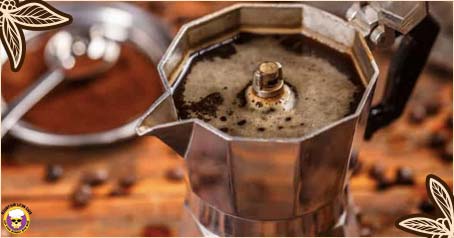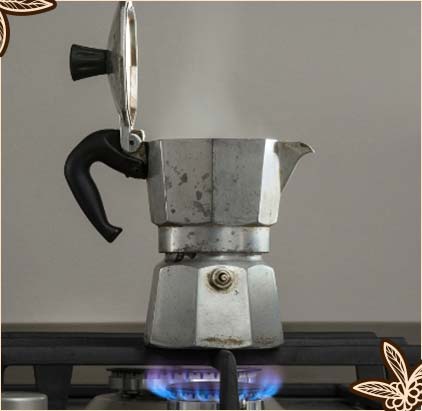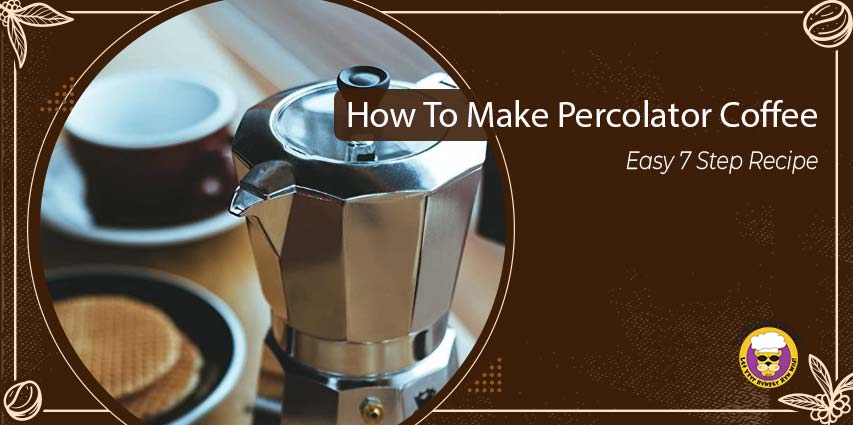Are you looking for an authentic cup of coffee with bold, rich flavor? How To Make Percolator Coffee? Percolated coffee is the perfect way to satisfy your caffeine craving and get a satisfying cup of joe. With its almost vintage-looking appliances and unique brewing process, making percolated coffee can be intimidating.
But it’s easier than you think! In this blog post, we’ll explore the art and science behind making percolated coffee; from choosing the right beans to understanding how long to brew. So if you’re searching for a classic taste that rewards patience with smooth deliciousness, read on for all our top tips to craft the perfect cup of percolated java.
Who Loves Percolated Coffee?

Percolated coffee appeals to a diverse range of coffee lovers. From avid connoisseurs seeking a nostalgic experience to casual drinkers exploring new flavors, percolated coffee has something for everyone.
It is loved by individuals who appreciate a strong and robust brew that awakens their senses with each sip. Even those who typically lean towards other brewing methods often find themselves indulging in a cup of perfectly percolated coffee from time to time.
What Exactly is Percolated Coffee?

Percolated coffee is a brewing technique where hot water is circulated through coffee grounds multiple times to extract flavor. The process involves a special pot called a percolator, which consists of a lower chamber holding water, an upper chamber containing a perforated basket for coffee grounds, and a vertical tube connecting the two chambers.
As the water heats up, steam pressure forces the boiling water to rise up the tube and shower over the coffee grounds. This “percolation” cycle repeats until the desired strength and flavor are achieved.
Related article:
Troubleshooting Tips for Keurig Not Brewing a Full Cup
How to Brew the Perfect Percolated Coffee?
Brewing percolated coffee requires attention to detail and a few important steps. Here’s a step-by-step guide on how to achieve that perfect cup:
Step 1: Choose Your Percolator
Select a high-quality percolator that suits your needs. Look for one with durable construction and a clear knob on top to monitor the brewing process.
Step 2: Grind Your Coffee Beans
Opt for a medium to coarse grind size specifically designed for percolation. The ideal grind ensures optimal extraction without over-extraction or excessive sediment in your cup.
Step 3: Measure the Coffee and Water
Follow the recommended coffee-to-water ratio, usually around 1 tablespoon of coffee per 6 ounces of water. Adjust the amounts based on your desired strength.
Step 4: Assemble Your Percolator
Fill the lower chamber of the percolator with water up to the appropriate level indicated. Place the perforated basket on top and add the measured coffee grounds.
Step 5: Heat and Brew
Set your percolator on a stovetop burner or an electric heat source. Allow the water to heat gradually until it starts percolating. Reduce the heat to maintain a gentle percolation cycle.
Step 6: Monitor the Brewing Process
Keep a close eye on the percolation process. Aim for a total brew time of around 7-10 minutes. Adjust the heat as needed to maintain a steady percolation rate.
Step 7: Remove and Enjoy
Once the brewing process is complete, carefully remove the percolator from the heat source. Allow it to cool slightly before serving. Pour the brewed coffee into your favorite mug and savor the rich aroma and flavors.
Pros and Cons of Percolated Coffee
As with any brewing method, percolated coffee has its own set of advantages and disadvantages. Let’s explore them in detail:
Pros:
Bold and robust flavor profile: Percolation extracts a full-bodied flavor that can be highly satisfying for those who enjoy a strong cup of coffee.
Aromatic experience: The brewing process of percolated coffee emits an enticing aroma that fills the room, enhancing the overall sensory experience.
Versatility: Percolators come in various sizes, accommodating different serving needs and making it suitable for both personal use and social gatherings.
Cons:
Potential over-extraction: If not monitored carefully, percolated coffee can suffer from over-extraction, leading to a bitter taste.
Sediment in the cup: Due to the brewing process, some fine coffee grounds may end up in the final brew, resulting in a slightly gritty texture. This may not be preferred by those who prefer a smoother cup of coffee.
Time-consuming process: Brewing percolated coffee can take longer compared to other methods, as the water needs to circulate through the coffee grounds multiple times.
Alternatives to Percolated Coffee
While percolated coffee has its charm, there are alternative brewing methods that you might want to explore. Here are a few popular alternatives:
French Press:
The French press is known for its simplicity and ability to produce a rich and full-bodied cup of coffee. It involves steeping coarsely ground coffee in hot water and pressing down a plunger to separate the brewed coffee from the grounds.
Pour Over:
Pour over coffee offers precision and control over the brewing process. It involves pouring hot water over a filter filled with coffee grounds. This method allows you to adjust variables like water temperature, pour rate, and extraction time to create a customized cup of coffee.
Espresso Machine:
Espresso machines are favored by those who enjoy concentrated and intense coffee flavors. These machines force hot water through finely ground coffee under high pressure, resulting in a small but potent shot of espresso.
Comparing Percolated Coffee to Other Brewing Methods
To truly appreciate percolated coffee, it’s worth comparing it to other popular brewing methods. Let’s take a closer look at how it stacks up against two favorites: drip coffee and espresso.
Drip Coffee:
Percolated coffee offers a distinct flavor profile compared to drip coffee. While drip coffee is known for its smooth and clean taste, percolation extracts bolder flavors, creating a more robust cup of coffee. The brewing process also differs, with drip coffee using gravity to pass water through a filter, while percolators utilize steam pressure.
Espresso:
Espresso is renowned for its concentrated and intense flavors. Percolated coffee, on the other hand, delivers a deeper extraction due to the multiple cycles of water circulation. This results in a stronger brew that some coffee lovers prefer over espresso.
Tips for Brewing the Best Percolated Coffee
To elevate your percolated coffee experience, here are a few expert tips:
- Experiment with different types of coffee beans to discover your preferred flavor profile.
- Use filtered water to avoid any unwanted impurities that might affect the taste.
- Preheat the water before adding it to the percolator to ensure a consistent brewing temperature.
- Avoid overfilling the percolator to prevent potential overflow and grounds in your final cup.
- Clean your percolator thoroughly after each use to maintain the flavor integrity and prevent buildup.
Conclusion
Percolated coffee is a timeless brewing method that continues to captivate coffee enthusiasts with its bold flavors and aromatic qualities. By understanding the intricacies of the percolation process and following the step-by-step guide, you can unlock the secrets to brewing the perfect cup. Whether you’re seeking a nostalgic experience or exploring new flavors, percolated coffee offers a unique and satisfying journey for your taste buds.
I’m Kara Chavez, and I love coffee. I like to create some of the best coffees around – espressos, lattes, macchiatos – you name it. I strive for perfection in my coffee-making skills, and I take great pride in providing a delicious cup of joe to my customers.
I’ve been working in the coffee industry for years now, and I know everything there is to know about making a perfect cup of coffee. My passion for coffee shines through in every cup that I make, and I hope that you’ll stop by soon so that I can share my love of coffee with you!

